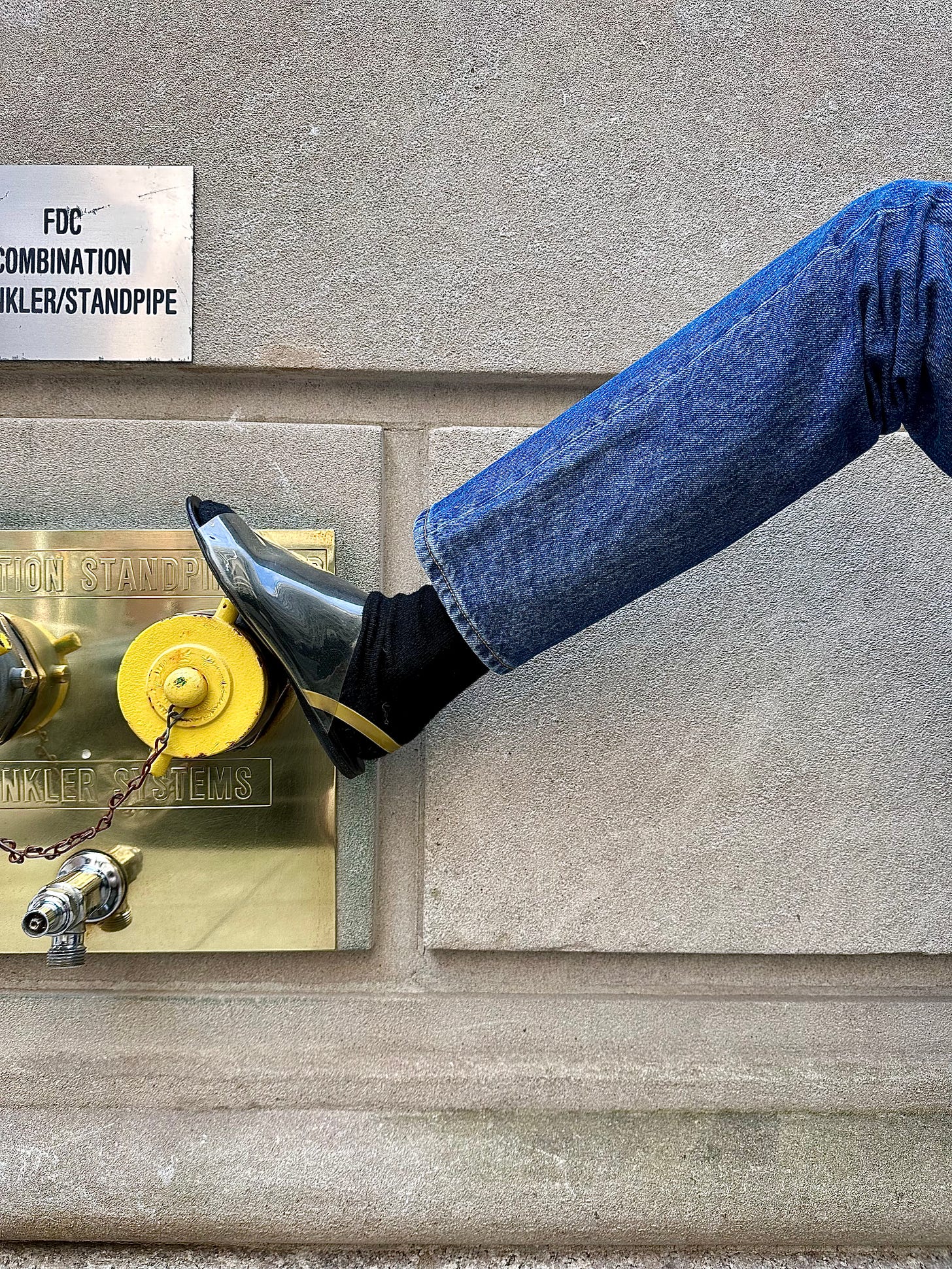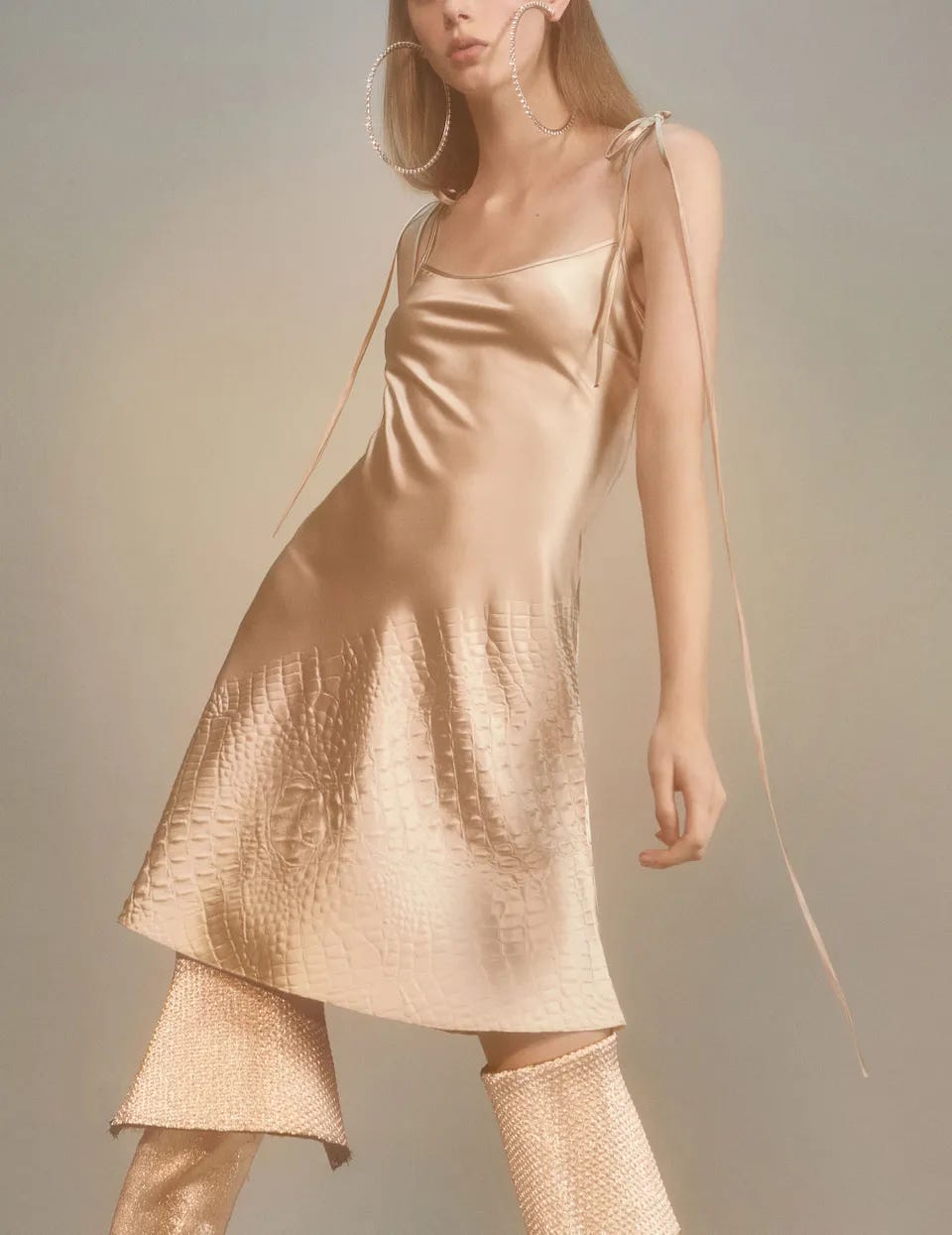If early last winter, the dressing vibe started as classy with a touch of ugly, and parlayed into the more clearly defined refined maximalism, which in its own way kind of became a broader conversation on taste and what it is and who has it and how to wield it (with the retrograde explosive blip of quiet luxury baked somewhere in there), this winter we are netting out at a new dressing motto that piggy backs off all of the above. That motto is:
It’s good to look a little weird.

For almost a decade the cues of high fashion have inclined us towards a definition of good taste that is defined and demonstrated by basic, streamlined silhouettes that are straightforward, serious, clean cut and mostly uncomplicated. But in the last few years there has been a slow drip towards a more eccentric style of dress. One that has a sense of humor.

We’re nowhere near peak yet. The inclinations feel lower stakes, like detachable, tiny risks you can take with an accessory — figure a hat, piece of jewelry or sock/shoe combo, but the pull towards the more eccentric could be an indication of what’s to come. (
wrote a good thing last month on the overall vibe shift as she feels it moving, which you can visit here.)
I remember the first time I saw an Area presentation. It was at the Standard Hotel and the models were wearing these shiny silk blouses and massive rhinestone earrings and it must have been like 2016 and I thought to myself then: this looks new.
That was before we’d come close to peak minimalism, but I’m reminded of that moment when thinking about this because there was a seductive nastiness and sense of genuinely unique perspective about the way Area was making clothes. It wreaked of authentic taste, and that taste cut squarely against the grain.
The way we’ve come to interpret this nastiness or ugliness (or whatever you want to call it) en masse has, the way I see it, by and large been defined by the work of Miuccia Prada in a post-Philo (Celine) era.
Prada has been a master of conveying an honest reflection of her creativity, and these reflections have often depicted rough edges that transmit a sense that the clothes (and the women who wear them) should never take themselves too seriously: stodgy shoes paired with knee length straight skirts with satin rosettes protruding from it, fuzzy belts looped through baggy trouser holes, slouchy socks styled with delicate t-strap heels, swim caps with everyday office clothes.

These rough edges are what define the way the pendulum is swinging and in popular fashion culture, have been fine tuned and made sticky by the work of such masters as Jonathan Anderson at Loewe and Matthieu Blazy at Bottega Veneta. You get a bit of it from Mullier’s Alaia too, and over there, it comes with more defined sex appeal.
What’s interesting, I think, is that in spite of the contemporary anchors responsible for the drip, it seems that these days, when a new style era lands and starts to spread across the field in such a way that makes it seem like the new vibe has always been there, it is harder for the traditional fashion system to take responsibility for the shift.
Prada didn’t blow up again because of the new runway collections of the last 5-and-change years. Their popularity has kind of been a product of what happened because of the second-hand economy and the old Prada-stans who provoked newfound interest in the archive of her creative intelligence.
This ripple could have been a byproduct of Old Celine mania, or a function of the fact that we were in a pandemic that shut the world down and had us craving something new. What better way to find inspiration when the world has stopped than to look back in history at when it was still going?
What we’re left with now are a bunch of whimsical, rough edges — a silly hat, or bag made entirely of feathers, out of place shells in the dead of winter, sunglasses that don’t actually fit your face, but do add a sense of humor to the rest of the looks that will probably come to define lauded “personal style” over the next several years.

It’s a win for the dressers among us who feel naturally inclined towards their more out-there impulses, and there is a nice sweet spot here because the actual dressing cues still feel pretty straightforward and practical.
There’s an element of fantasy and practicality that defines this moment and I think that balance is what makes it so resonant.


But the inclination to look a little weird also makes a solid case for those who take their clothes more seriously. It encourages that we take low-stakes risks, the kind that will eject us from our comfort zones, teaching the lesson along the way that style doesn’t have to be serious for it to be good.
But one thing I keep thinking about which feels crucial to note as the conversation on taste expands further and we start to talk about celebrating the divergent directions that our respective styles take is that one’s authentic taste and personal style can never become secondary priorities to the act of participating in a trend. If/when that happens is the point that they (the taste and the style) start to feel mimetic. The whole plot gets lost.
The aim is to push yourself only as far as it still feels exciting and fresh, not wobbly, uncomfortable or borderline clown-like, which is to say nothing of pushing yourself to find an overlap on the Venn diagram of what is true to you and reflective of where we’re at in the mill, but it is to caution against losing yourself in it.
So get weird, absolutely, but stay close to the kernel of truth at the center of you.
The recommendations
Here’s a starter pack of digestible ways to get weird/have a fashion laugh that should feel low stakes enough to tack on to your you-ness, featuring:
Keep reading with a 7-day free trial
Subscribe to The Cereal Aisle by Leandra Medine Cohen to keep reading this post and get 7 days of free access to the full post archives.





